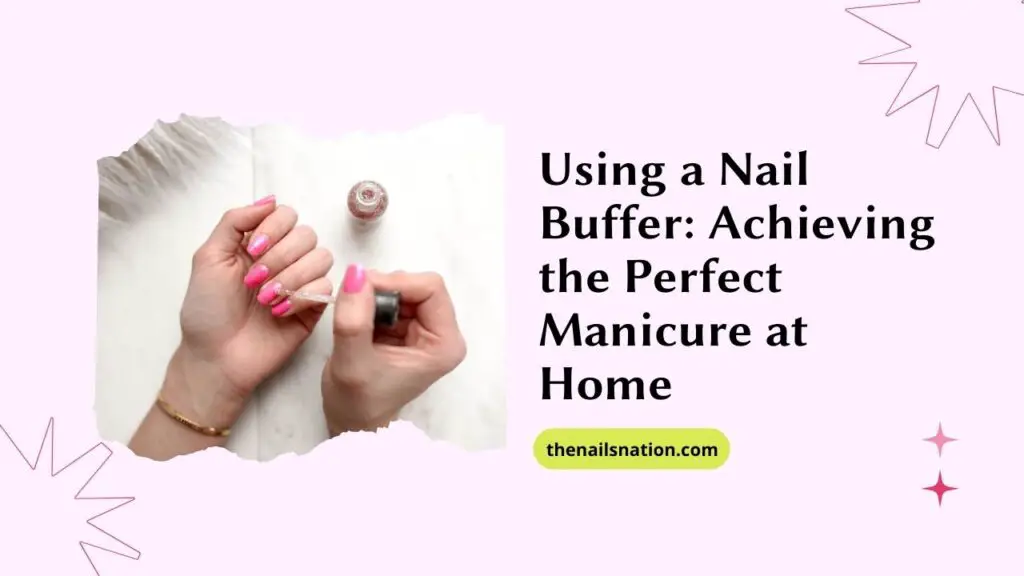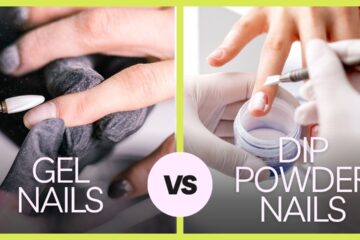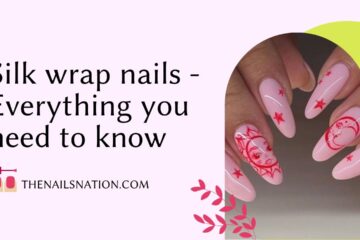Nail buffers play a crucial role in the aesthetics of nail care, providing more than just a polished look. They are essential for creating smooth, shiny nails, and their usage extends beyond superficial beauty, contributing to the overall health of your nails.
With a variety of textures and surfaces, nail buffers can gently shape and contour your nails, removing ridges and stains with ease.

Understanding the proper nail buffing process is vital for maintaining the integrity of the natural nail.
Incorrect buffing techniques or overuse can lead to weakened and damaged nails, undermining the very purpose of the tool.
On the other hand, informed and moderate buffing can strengthen the nail surface, promote better polish adhesion, and improve nail growth when done correctly.
Key Takeaways
- Nail buffers are essential for smooth, shiny nails and promote nail health.
- Proper buffing techniques protect the integrity of your nails.
- Informed use of advanced tools and methods enhances buffing effectiveness.
What are Nail Buffers?
Nail buffers are essential tools for achieving smooth, shiny nails. They come in various forms and grit levels, each designed for specific aspects of nail care.
Types of Nail Buffers
Nail buffing blocks and buffer blocks are compact, often rectangular tools that conveniently fit in your hand for easy nail shaping and polishing.
Another variant, the chamois buffer, is a softer option typically attached to a handle and used with a buffing cream to achieve a high-gloss finish.
Below is an outline of common types of buffers:
1. Nail Buffing Blocks
→ Multi-sided block with different grits for filing and buffing.
Use Case – Shaping and smoothing nails.
2. Buffer Blocks
→ Usually a 4-sided block with various textures.
Use Case – Enhancing natural shine, smoothing ridges.
3. Chamois Buffer
→ A soft, fabric buffer typically used with cream.
Use Case – Achieving a high-gloss finish.
Grit Numbers Explained
The grit number of a nail buffer indicates the coarseness or fineness of the buffer’s surface, with lower numbers being coarser and higher numbers being finer.
For instance, a grit number of 80 is quite coarse and should be used with caution, as it can quickly file down the nail. A medium grit, such as 180, is ideal for smoothing nail edges. Finer grits, like 240 or higher, are perfect for polishing the nail surface to a shine.
It’s important to use the correct grit in order to avoid damaging your nails. Here’s a breakdown:
Coarse Grit (60-100): For shaping thick nails and toenails
Medium Grit (180-220): For smoothing edges and refining shape
Fine Grit (240-600): For finishing touches and polishing
The Nail Buffing Process
Nail buffing is a critical step in achieving a smooth, shiny finish on your nails. It involves several techniques and care procedures to ensure optimal results.
Preparing Your Nails
Before you start buffing, ensure your nails are clean and free from any polish or oils. Use a nail file vs. buffer to shape your nails to your desired style, keeping the motion in one direction to prevent splitting.
Next, wash your hands with soap and water to eliminate any dust and natural oils. You may apply cuticle oil to soften the skin around the nails before gently pushing the cuticles back.
The Proper Buffing Technique
Start by selecting a multi-sided nail buffer for various levels of coarseness. Begin with the coarsest side of the buffer to smooth out any ridges or imperfections with gentle pressure.
Use circular motions to avoid creating heat from friction that can damage your nails. Progressively move to the finer sides to polish the surface of your nails. It’s important to buff each nail for the same amount of time to achieve a consistent look across all fingers.
After Buffing Care
After buffing your nails to a shine, it’s essential to nourish them. Washing your hands to remove nail dust is the first step. Then, apply a moisturizer to rehydrate your skin and nails.
For added nail care, use a cuticle oil to moisturize the nail beds and promote healthy nail growth.
Regular moisturizing can help maintain the smoothness and shine from the buffing process.
Avoiding and Addressing Damage
Proper nail care is essential to prevent damage caused by over-buffing. Recognizing signs of nail stress and knowing recovery methods will maintain healthy nails.
Signs of Over-Buffing
When you buff your nails too frequently or with too much pressure, the top layers of your nails can become thin and weakened. Signs that you’ve over-buffed your nails include:
Thinning of the nail plate: Your nails appear translucent or bend easily.
Surface ridges: Visible lines or grooves may develop across your nails.
Dullness or lack of shine: A healthy nail should have a natural glow without polish.
Sensitivity or pain: You might experience discomfort when applying pressure on your nails.
Nail Health and Recovery
To recover from over-buffing and improve your nail health, consider the following steps:
Limit Buffing: Reduce the frequency of buffing to no more than once a month.
Nourishing Treatments:
Apply nail conditioners or hydrating oils to replenish moisture.
Use nail strengtheners that contain ingredients such as keratin or biotin.
Dietary Considerations:
Consume a balanced diet rich in Vitamins A, C, D, and E, and protein to support nail growth.
Professional Consultation: Consult a doctor if you notice severe cracking or persistent pain, as it may indicate damage beyond cosmetic issues.
By addressing these signs early and adjusting your nail care routine, your nails can return to a healthy state and continue to grow stronger. Remember that gentle care is key to preserving nail integrity.
Advanced Buffer Techniques and Tools
To achieve a professional-level manicure, understanding advanced buffering methods and the tools available can elevate the quality of your at-home nail care routine.
Professional Manicure Results at Home
Natural shine and a shiny, glossy finish on your nails can be attained with the right buffering techniques. Begin by using a four-sided nail buffer to shape and smooth your nails.
Each side has a different grit level; start with the coarsest to shape the nail.
Then sequentially use the finer grits for smoothing, which prepares a perfect base for polish application.
To guarantee an even and shining result, apply a base coat before your color, then a top coat to seal and impart extra gloss afterward. High-quality nail buffers like the Tweezerman collection offer ergonomic design for easier handling and more precise buffing.
Step by Step Buffing Process:
Shape nails with the coarsest side.
Smooth nails with medium grit.
Prepare for polish application with fine grit.
Finalize for natural shine using the finest side.
Electric Buffers and Their Use
For those seeking efficiency and advanced results, electric buffers are the way to go. An electric buffer, such as the Fancii Professional Electric Nail File, can drastically reduce the time spent on manual buffing. Their ergonomic design is typically more comfortable for prolonged use and can provide a consistent shine without manual effort. When using electric buffers, it’s important to select the appropriate attachments and to not apply too much pressure to avoid damage to the natural nail.
Best Practices for Electric Buffing:
Choose the right attachment for the desired result.
Gentle pressure is key for safe buffing.
Regular intervals of use help maintain a glossy finish.
By incorporating these advanced techniques and tools into your routine, you hold the power to create a polished, professional look from the comfort of your own home.
Frequently Asked Questions
To ensure the proper maintenance and care for your nails, these FAQs address common inquiries about nail buffers and their use.
1. How do I properly use a nail buffer?
→ To use a nail buffer correctly, start with the coarsest side to smooth ridges and surface irregularities. Progress through finer grits to polish and finish by buffing to a shine with the smoothest side.
2. What are the benefits of using an electric nail buffer?
→ An electric nail buffer can save you time and effort, providing a quick, uniform shine. It often produces more consistent results compared to manual buffing.
3. Can a nail buffer block help achieve a natural shine?
→ Yes, a nail buffer block, when used correctly, can smooth the nail surface and give your nails a natural, glossy shine without the need for polish.
4. Which qualities should I look for when choosing the best nail buffer?
→ Select a buffer with varied grit levels for versatility, a comfortable shape for ease of handling, and durable materials for longevity.
5. What is the difference between a nail buffer and a nail file?
→ Nail buffers are designed to smooth and polish the nail’s surface, while nail files are used to shape the edges and shorten nails.
6. Are there any effective alternatives to using a nail buffer?
→ A high-grit nail file or a chamois nail buffer can be effective alternatives, providing similar shining and smoothing effects.



